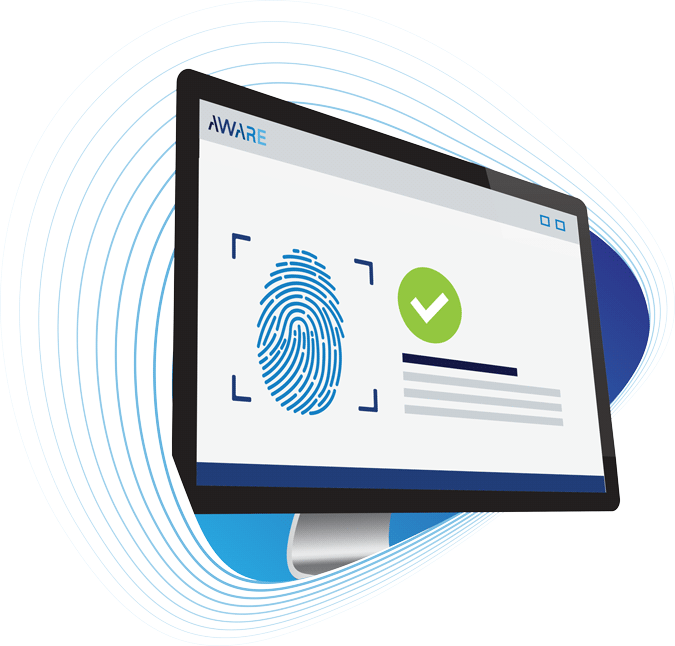Four Ways Law Enforcement Agencies Benefit from Rapid Fingerprinting | Biometric Forensics
August 16, 2023 | 4 minute read
In the realm of modern law enforcement, technological advancements have revolutionized the way investigations are conducted and suspects are identified. Among these advancements, rapid fingerprinting stands out as a game-changer, providing law enforcement agencies with invaluable tools to enhance their biometric forensic capabilities. From expedited identification processes to ensuring accurate warrants, rapid fingerprinting has ushered in a new era of efficiency and accuracy. In this article, we will explore four key ways law enforcement agencies benefit from the implementation of rapid fingerprinting technology.
Benefits of Rapid Fingerprinting in Forensic Biometrics
1) Expedited Field Fingerprinting and Database Checks
Time is often of the essence in law enforcement scenarios, where swift actions can be critical to the success of an operation. Rapid fingerprinting technology empowers officers to obtain fingerprints from individuals in the field and cross-reference them against State and Federal fingerprint databases within a matter of seconds. In less than one minute, law enforcement can access critical information that could significantly impact the course of an investigation. This rapidity allows officers to make informed decisions promptly, aiding in apprehensions, verifying identities, and preventing potential threats.
2) Direct Access to FBI Databases
Traditionally, law enforcement agencies had to rely on third-party vendors or send fingerprint data to the Federal Bureau of Investigation (FBI) for processing, which often led to delays in receiving crucial information. With rapid fingerprinting technology, law enforcement agencies now have the privilege of direct access to FBI databases. This direct connection eliminates the need for intermediaries, drastically reducing the time it takes to retrieve results. The expedited access to FBI databases enhances information-sharing between agencies and advances the overall investigative process.
3) Ensuring Accurate Warrants and Apprehensions
One of the most significant challenges faced by law enforcement is ensuring that warrants are served on the correct individuals. Mistaken identity can lead to grave consequences, including violations of civil liberties and public mistrust. Rapid fingerprinting technology plays a pivotal role in mitigating this risk. By swiftly verifying a suspect’s identity through their fingerprints, law enforcement agencies can be confident that the right person is being targeted. This accuracy not only safeguards individual rights but also strengthens the overall credibility of law enforcement efforts.
4) Facilitating Identification of Deceased or Unconscious Persons
Tragic incidents involving deceased or unconscious individuals require a rapid and accurate identification process. Rapid fingerprinting offers a solution by enabling law enforcement to access fingerprint databases and swiftly match prints from the scene to existing records. This capability is particularly crucial in cases where traditional identification methods may be challenging, such as disaster scenarios or situations involving incapacitated victims. By aiding in the swift identification of individuals, law enforcement can notify families, expedite legal proceedings, and ensure dignified handling of remains.
Rapid Fingerprinting Forensic Solutions
Today, forensic biometric technology is available to shorten the amount of time it takes to accurately identify suspects both in the field and in-house. Mobile fingerprinting devices enable officers in the field to obtain fingerprints of persons in the field and check them against State and Federal fingerprint databases in under 1 minute. Through the use of this device, officers can determine whether a person has provided a false identity, has a criminal history, or is wanted for a crime. Having this information can alert officers to whether a person with whom they are interacting may pose a danger to the officer. Other benefits for officers may be ensuring warrants are served on the right person and the identification of deceased or unconscious persons whose fingerprints may be in a database.
Additionally, ABIS (Automated Biometric Identification Solutions) or AFIS (Automated Fingerprint Identification Systems) allow local law enforcement agencies to have direct access to FBI databases, cutting down the time it takes to get results back after sending them to third-party vendors or to the FBI. This could bring quicker justice to families impacted and ensure public safety by getting perpetrators off the street faster.
For local law enforcement agencies interested in solutions that will help speed up the investigative process, Aware offers a complete family of ABIS products for any sized civil or law enforcement community.
For large-scale forensic biometric identification, Aware’s automated biometric identification system, AwareABIS™, supports fingerprint, face, and iris recognition for large-scale biometric identification. Designed to serve between 1-30 million identities or more, its modular architecture helps security teams configure and optimize the system for civil or criminal applications.
For small-scale forensic biometric identification, AFIX Tracker supports fingerprint, palmprint, latent print and facial identification for small-scale biometric identification. Designed to serve between 15,000 and 2 million identities, AFIX Tracker is ideal for crime scene investigation applications in low to moderate sized community populations. AFIX Tracker provides minutiae-based search capability and can be configured as either a standalone system, or for use with centralized, server-based data stores. Its storage and search capabilities are fully scalable to enable use with a wide array of database sizes.
For more information or to get started with rapid fingerprinting and forensic biometrics, get in touch with our team below.
